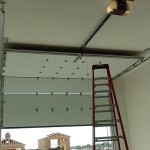What R Value for Garage Ceiling?
The R-value of a garage ceiling is a measure of its thermal resistance. The higher the R-value, the more resistant the ceiling is to heat flow, and the better it will insulate your garage. In general, you want to choose an R-value that is appropriate for your climate and the type of garage you have.
For example, if you live in a cold climate, you will need a higher R-value ceiling than if you live in a warm climate. Similarly, if you have a detached garage, you will need a higher R-value ceiling than if you have an attached garage.
The following table provides general guidelines for choosing an R-value for your garage ceiling:
**Climate** **R-Value** Cold R-30 to R-49 Moderate R-19 to R-30 Warm R-13 to R-19
**Garage Type** **R-Value** Attached R-19 to R-30 Detached R-30 to R-49
In addition to climate and garage type, you should also consider the following factors when choosing an R-value for your garage ceiling:
- The type of insulation you are using. Different types of insulation have different R-values per inch. For example, fiberglass insulation has an R-value of R-3.2 per inch, while cellulose insulation has an R-value of R-3.5 per inch.
- The thickness of the insulation. The thicker the insulation, the higher the R-value. However, you should keep in mind that thicker insulation can also be more expensive.
- The cost of the insulation. Insulation is available in a variety of price ranges. You should choose an insulation that is affordable and that meets your needs.
Once you have considered all of these factors, you can choose an R-value for your garage ceiling that is appropriate for your specific needs.

What R Value Do I Need Johns Manville

Danleys

Know Your R Value

Drywall How Much R Value Do You Need To Insulate A Garage Ceiling With Exposed 2x6 Rafters In Zone 4 Home Improvement Stack Exchange

Danleys

Pros And Cons Of Insulating Your Garage Should You Do It Sealed

Ceiling Garage Insulation Advanced Solution

R Value Insulation

Expol Building Code Changes

How Much Insulation Does Your Home Need Guide








